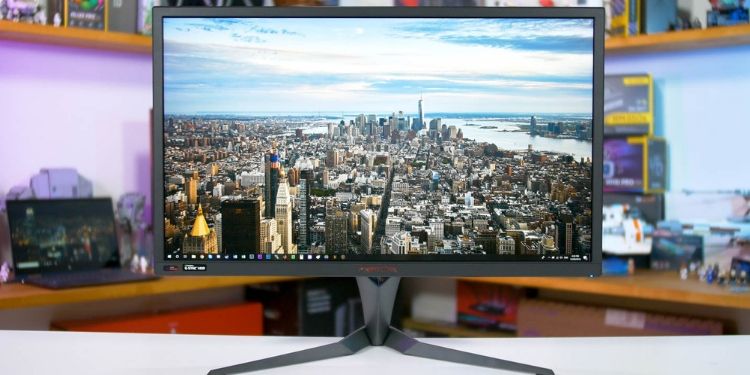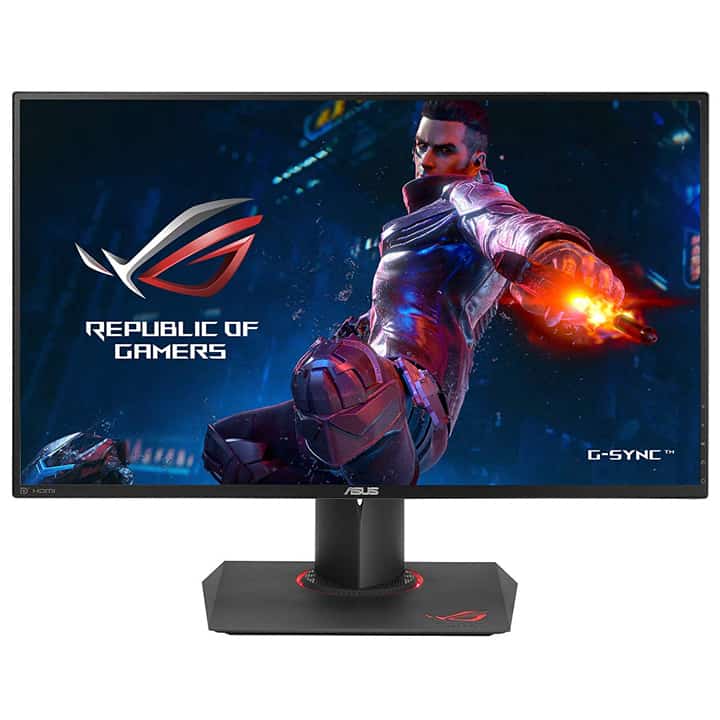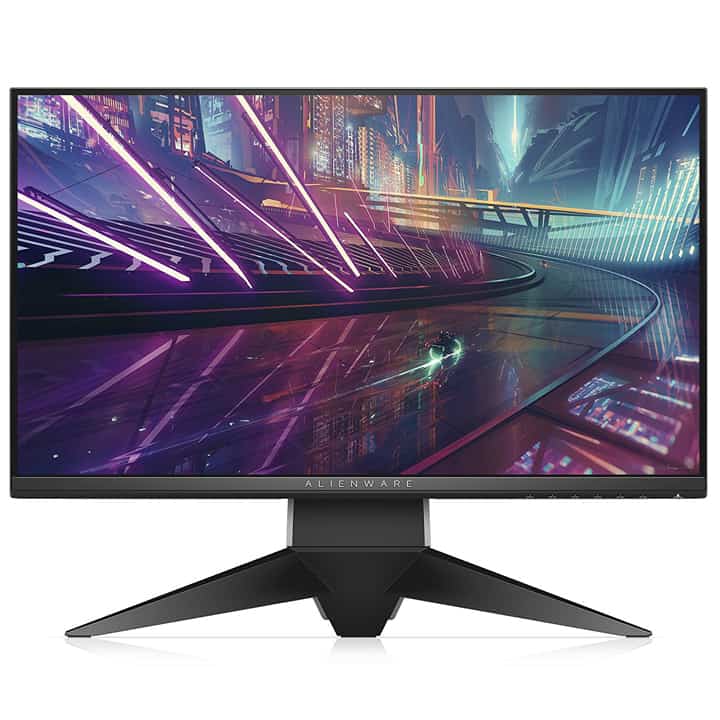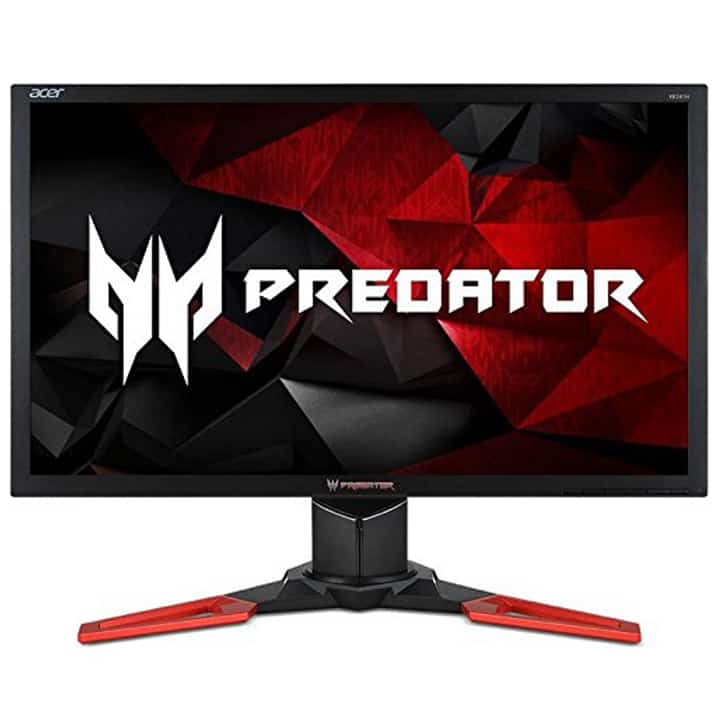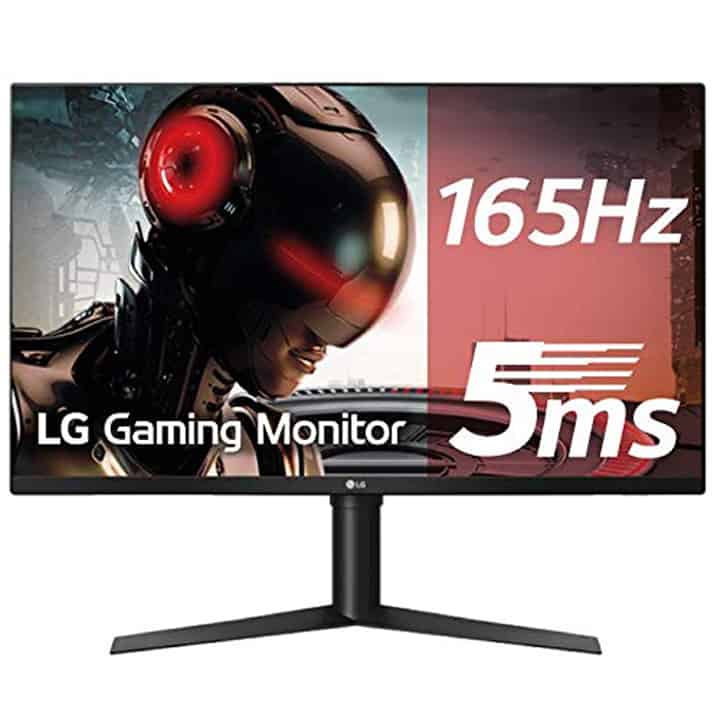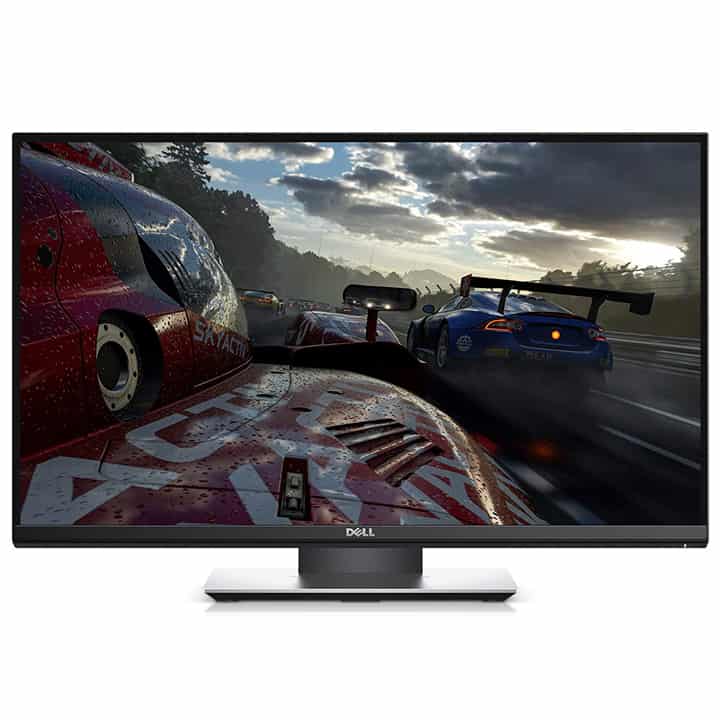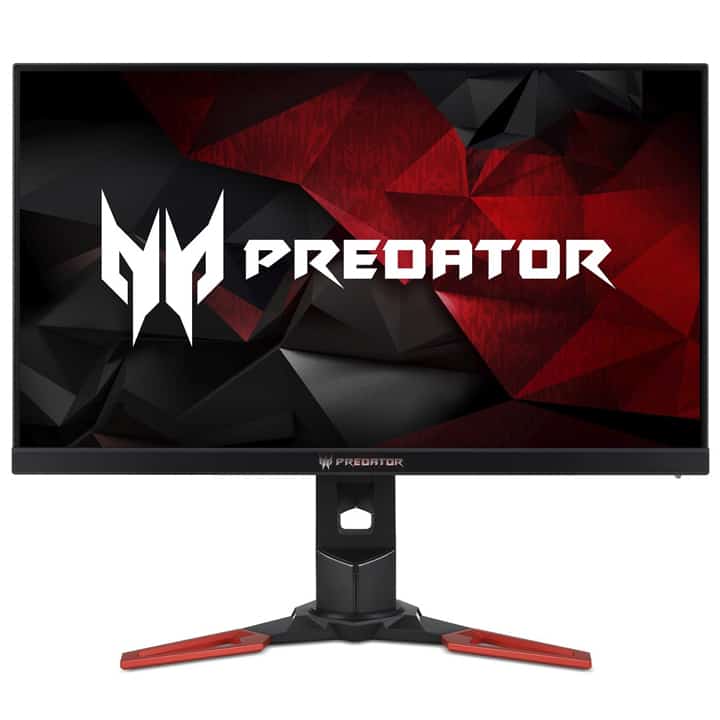G-Sync is a powerful hardware-based technology that can eliminate screen tearing and stuttering to give you a silky-smooth gaming performance. If your PC has an Nvidia graphics card, you can utilize the G-Sync built into the monitor to upgrade your visual experience.
For some people, this isn’t that big of a deal because they’re able to reliably stay at or around their monitor’s max frame rate, or they are just heathens that suck the screen tearing up… not judging though. Totally not judging.
For instance, if you want to stop being a heathen, we are more than willing to help you, which is why we put together this guide. We will cover everything you need to know in order to purchase a Nvidia G-Sync monitor for yourself at the bottom (if you’re still having trouble wrapping your head around exactly what G-Sync is, then check that section out).
Best 1440p IPS
ASUS ROG PG279Q
- Screen Size: 27”
- Resolution: 1440p
- Refresh Rate: 144Hz
- Response Time: 4ms
- Panel Type: IPS
- PPI: 109
Insane refresh rate
Alienware 25 Gaming Monitor
- Screen Size: 24.5”
- Resolution: 1080p
- Refresh Rate: 240Hz
- Response Time: 1ms
- Panel Type: TN
- PPI: 90
Best Budget
Acer Predator 24in LCD Monitor
- Screen Size: 24”
- Resolution: 1080p
- Refresh Rate: 144Hz
- Response Time: 1ms
- Panel Type: TN
- PPI: 91
Best Large 1440p
LG 32GK850G-B 32” Gaming Monitor
- Screen Size: 32”
- Resolution: 1440p
- Refresh Rate: 144Hz
- Response Time: 4ms
- Panel Type: VA
- PPI: 93
Best Multipurpose
Dell Gaming Monitor S2417DG YNY1D
- Screen Size: 24”
- Resolution: 1440p
- Refresh Rate: 165Hz
- Response Time: 1ms
- Panel Type: TN
- PPI: 123
4K resolution
Acer Predator XB271HK 27” Wide Screen Display
- Screen Size: 27”
- Resolution: 2160p (4K)
- Refresh Rate: 60Hz
- Response Time: 4ms
- Panel Type: IPS
- PPI: 163
Table of Contents
1. ASUS ROG PG279Q
Best 1440p IPS G-Sync Monitor for Gaming
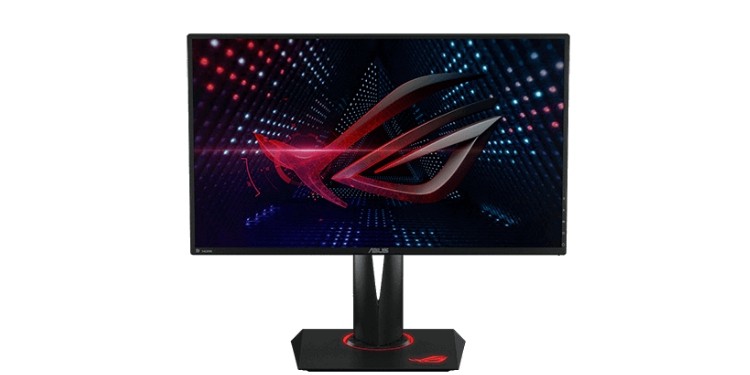
- Screen Size: 27”
- Resolution: 1440p
- Refresh Rate: 144Hz
- Response Time: 4ms
- Panel Type: IPS
- PPI: 109
- Excellent refresh rate
- Great color accuracy
- Adjustable stand
- Expensive for resolution
The ASUS ROG PG279Q is a strong performer and the best G-Sync monitor for gaming. With a 1440p resolution, it is sharper than standard HD but is not as graphically intensive as a 4K monitor.
The 27-inch screen is a great size for gaming, and it is an IPS panel to boot. This gives it great color and viewing angles for gamers who enjoy visually stunning games.
Despite being an IPS screen, it has an excellent refresh rate of 144Hz; it can even be overclocked to a blistering 165Hz (then again, this combined with the G-Sync is one are the biggest reasons it is so expensive). This 144hz G-Sync monitor also enjoys a solid response time of 4ms. So not only does it look great, but it provides excellent performance for competitive gamers looking for the edge in speed.
As far as ports go, it includes DisplayPort and HDMI inputs. Overall, this monitor performs well in every category, bringing together beautiful visuals and blazing speed. Like all the other monitors on this list, it brings G-Sync to the party.
2. Alienware 25 Gaming Monitor
Best 1080p G-Sync Monitor
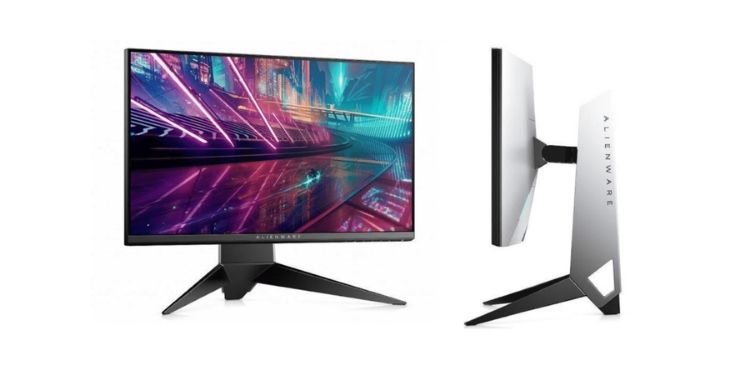
- Screen Size: 24.5”
- Resolution: 1080p
- Refresh Rate: 240Hz
- Response Time: 1ms
- Panel Type: TN
- PPI: 90
- Insane refresh rate
- Great response times
- Comes in G-Sync and Freesync versions
- Only 1080p
While they are not as dazzling as other higher resolution options, 1080p monitors can provide solid performance at a lower price point all while demanding less from your GPU. This is where the Alienware 25 Gaming Monitor shines.
It has a TN-panel, meaning it sacrifices some color and wider viewing angles. In return, it has a nearly instantaneous response time of 1ms. It also has a shocking refresh rate of 240Hz, blowing all the other monitors on this list out of the water.
At 24.5 inches, it is a decent size, but not impressively large. It looks rather sleek and stylish, which is a nice bonus. It comes with 4 USB 3.0 ports, along with an HDMI input.
For gamers looking for the quickest, most responsive G-Sync monitor, this is the choice for you. While its colors and resolution might be somewhat lacking, if you need a competitive edge and enjoy the smoothness of G-Sync at incredible refresh rates, then look no further.
3. Acer Predator 24in LCD Monitor
Best Budget G-Sync Monitor
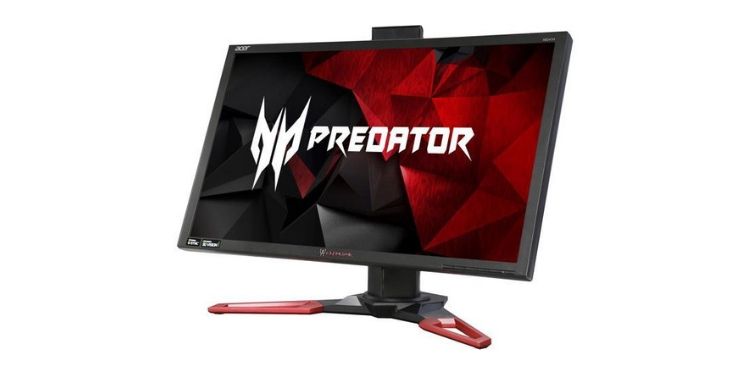
- Screen Size: 24”
- Resolution: 1080p
- Refresh Rate: 144Hz
- Response Time: 1ms
- Panel Type: TN
- PPI: 91
- Good price
- Decent image for TN panel
- Excellent refresh rate
- 1080p resolution
If you want the tear-free gameplay that G-Sync provides, but don’t want to break the bank, then the Acer Predator XB241H is the choice for you. It provides G-Sync at a great price point, and still includes a solid set of features.
It has a refresh rate of 144Hz, but this can be overclocked up to 180Hz. In conjunction with G-Sync, this refresh rate will allow for buttery smooth gameplay. Additionally, it has a response time of just 1ms. These features make it great for users playing games that require fast reactions.
However, due to its low cost, it does have some drawbacks. For instance, the resolution is only 1080p; however, this isn’t really a big deal for a monitor this size. It is also a TN panel, which doesn’t provide the same colors and viewing angles as other monitors (it is what allows for that faster response time, for what it is worth).
Design-wise, this monitor features a sleek red-accented stand. It can tilt 5 degrees forward and up to 35 degrees back, for a more ergonomic viewing experience. For ports, there is a DisplayPort input as well as HDMI.
This monitor is not a top of the line peripheral, but it offers great performance and features, including G-Sync, for an excellent price.
4. LG 32GK850G-B 32” Gaming Monitor
Best Large 1440p G-Sync Monitor
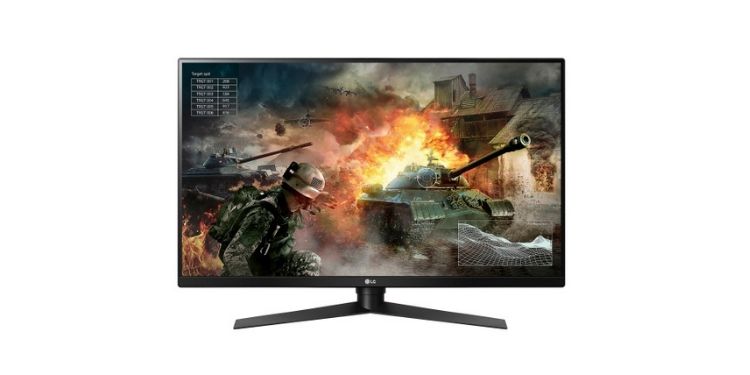
- Screen Size: 32”
- Resolution: 1440p
- Refresh Rate: 144Hz
- Response Time: 4ms
- Panel Type: VA
- PPI: 93
- Good pixel density
- Low input lag
- Solid image quality
- Bad viewing angles
The LG 32 GK850G is a larger G-Sync monitor with a great set of features and is one of best large G-Sync monitors on the market.
At 32 inches, this monitor has plenty of real estate. To complement its size, it has a resolution of 1440p, which is good since 1080p would start to look blurry at this size. It also has a VA panel, giving it great color and contrast. These features make it appealing to gamers who enjoy immersive, visually striking games.
Even considering its excellent picture, it doesn’t sacrifice much on speed. It has a respectable 4ms response time. It even has a refresh rate of 144Hz, allowing you to get more out of its G-Sync capability.
The design is also sleek, but not too flashy-- unlike many gaming monitors-- it includes an LED ring at the center-rear of the panel.
5. Dell Gaming Monitor S2417DG YNY1D
Best Multipurpose G-Sync Monitor
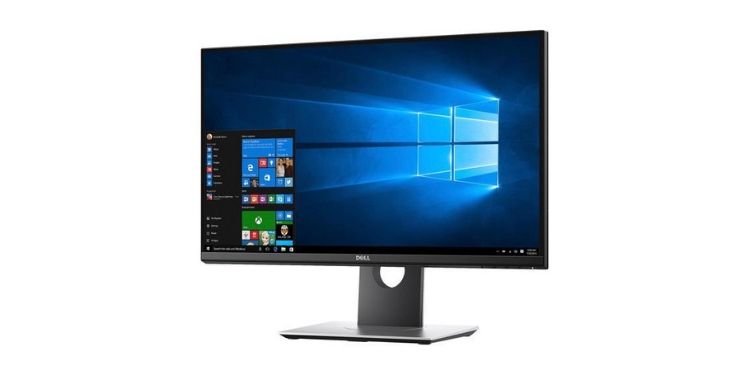
- Screen Size: 24”
- Resolution: 1440p
- Refresh Rate: 165Hz
- Response Time: 1ms
- Panel Type: TN
- PPI: 123
- Adjustable stand
- Good resolution and great PPI
- High refresh rate
- Poor viewing angles
While not the cheapest monitor on this list, the Dell S2417DG YNY1D is still quite inexpensive, especially for a G-Sync monitor. But don’t let the price fool you; it has some quality features.
The most impressive feature is its 1440p resolution which is a great aspect for the price. It also has a refresh rate of 165Hz, which goes great with the G-Sync capability. A 1ms response time is sure to satisfy gamers with an itchy trigger finger.
There are a couple downsides, however. First being its smaller, 24-inch display. One downside is that the screen size is only 24 inches. This is by no means tiny, but it is one of the smallest monitors on this list. It also has a TN panel, which has less impressive colors and viewing angles.
The monitor itself can tilt, pivot, swivel, and even adjust its height to find the perfect viewing angle.
6. Acer Predator XB271HK 27” Wide Screen Display
Best 4K G-Sync Monitor
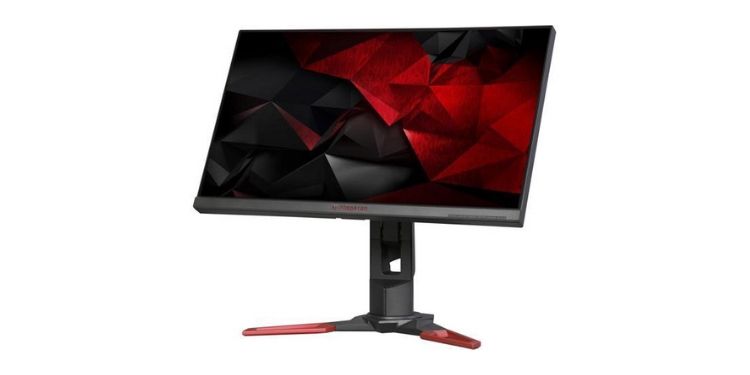
- Screen Size: 27”
- Resolution: 2160p (4K)
- Refresh Rate: 60Hz
- Response Time: 4ms
- Panel Type: IPS
- PPI: 163
- 4K resolution
- Excellent color
- Good build quality
- Not many video inputs
For gamers demanding only the highest quality visuals, 4K is the way to go. The Acer Predator XB271HK brings 4K resolution and G-Sync technology into one impressive monitor.
This monitor is an IPS panel, meaning the incredible resolution is matched by excellent color performance and great viewing angles.
Unfortunately, gaming in 4K requires some sacrifice and here that sacrifice is a refresh rate of just 60Hz. Response time, however, is decent at 4ms. For ultra-competitive gamers, these numbers may be subpar.
But for those gamers who want the most immersive experience, this monitor delivers. The great color and high resolution are displayed on a 27 inch screen. If you have a graphics card powerful enough to run 4K, and enjoy captivating visuals, this G-Sync monitor will more than get the job done.
Features to Look for in a G-Sync Monitor
If you are a heavy gamer, then a decent monitor is necessary for less lag, faster response times, and better graphical fidelity. There are many monitors on the market, so it is important to look for the following features before buying.
Why Get A G-Sync Monitor?
While G-Sync monitors tend to be more expensive than their regular counterparts, they make up for their price with, well, G-Sync… Of course, this is assuming you are using an Nvidia GPU, if you aren’t then you won’t get any use from G-Sync.
Normally, if your GPU outperforms your monitor, it will send frames to it at a higher rate than the monitor can display, which causes screen tearing, (where 2 frames are displayed at the same time).
G-Sync eliminates this. In layperson’s terms, within each G-Sync monitor, there is a chip that stores frames before sending them to the monitor. Then the software uses these frames to sync up your graphics card with your monitor, making games appear much smoother.
Resolution
A monitor’s resolution tells you how many pixels wide and tall it is. In general, the higher the resolution, the more pixels per unit area there are and the better your picture quality is. Most monitors nowadays run at least in HD (1920 x 1080). However, many monitors allow for 2k/QHD (2560 x 1440) and 4K/UHD (3840 x 2160) resolutions. A monitor with a good resolution can be a great help keeping your bearings while in a match, as it lets all elements on the screen pop and be clearly defined.
If you pick a monitor with a high resolution, make sure you have a powerful enough GPU to handle it. Most mid-range gaming rigs nowadays can maintain at least 30fps at 2k/QHD resolutions or even potentially higher depending on other settings. However, only the more powerful high-end gaming rigs can push over 30fps on 4K/UHD resolution.
PPI
PPI stands for pixels per inch, which is pretty self explanatory. In general, the higher the PPI the better, as that results in a sharper, clearer image. The amount of pixels per inch is based on a monitor’s resolution as well as its overall size. Higher resolution and lower size correlates to higher PPI.
Another thing to take into consideration when looking at PPI is the distance you’ll be sitting from the monitor. The closer you are to the monitor, the higher the pixel density you’ll need in order to not see individual pixels. On the other hand, if you sit far away, you won’t need a very high PPI to see a sharp image.
Refresh Rate
The refresh rate of a monitor refers to how many times per second the monitor refreshes the image on the screen. Every moment you are playing a game, visuals on the screen are being refreshed. The faster the refresh rate, the smoother the picture is and the less screen tearing occurs during movement.
Most standard computer monitors have a refresh rate of at least 60Hz meaning that they can update the display up to 60 times per second. While this is pretty quick, it is sometimes not fast enough for dynamic applications, such as video games. Hardcore gaming is assisted by a faster refresh rate for smoother visuals and faster response times. Most gaming-dedicated monitors have a refresh rate double that of normal monitors, so around 120Hz-144Hz. Coupled with a good resolution, a high refresh rate contributes to better graphical fidelity and smoother gameplay.
Once again, if you get a monitor with a very high refresh rate you need to make sure you have a GPU that can take full advantage of it. Make sure your graphics card can run the games you want at the settings you desire.
Response Time
The response time of your monitor refers to how quickly each pixel changes colors. In general, response times are measured from going from black to white to black again. Response time is not to be confused with the refresh rate. The refresh rate is how many times per second the monitor displays a new image. Higher refresh rates are desirable, while lower response times are better.
Normally, monitor response times are not a big factor for most regular computer applications. Surfing the web, sending emails, watching videos, editing photos, and downloading files are not affected too greatly by response times.
The main exception is when gaming. For gamers, every millisecond counts. The difference between landing a hit or getting crushed by your opponent is on the order of a few milliseconds. That is why gaming monitors typically have very quick response times; somewhere in the area of 1-5ms. If you play a lot of games that require ultra-precise timing like Overwatch, Fortnite, or Rocket League, then look for a monitor with very low response times.
Panel Type
Another important feature is the panel type. The panel type refers to the specific configuration of LCD cells in your monitor and affects how your monitor renders images and colors. Nowadays, there are 3 major kinds of panel types you will find in about 99% of gaming monitors.
- TN (Twisted Nematic). TN panels are generally the least expensive and the quickest but are the lowest quality kind of LCD panels. TN panels normally have low response times and higher refresh rates but do not have impressive color range or viewing angles. As such, they are great for games that require quick movements and timing (ie competitive games) but not so much for games that have to render a lot of detail and color.
- VA (Vertical Alignment). VA panels are a type of LED display. VA panels arrange their liquid crystals in such a way that they appear the same color from multiple angles. They also use special polymer stabilizers to lessen the amount of power that monitor uses. In general, VA panels have slower response times and average refresh rates. However, they have probably the best contrast and depth of field. They also occupy a nice middle ground in pricing, with some lower end models costing as much as TN panels.
- IPS (In-Plane Switching). IPS panels are probably the most versatile among the common types of monitors. IPS panels are known for producing the best colors and viewing angles. They typically have lower refresh rates and higher response times than either TN or VA panels, yet they balance this shortcoming with the high-quality picture. IPS can have higher refresh rates but it costs significantly more than an equivalent TN panel; however, they cap out at around 4ms response times.
Adaptive Sync
Many gaming monitors today come pre-equipped with adaptive sync protocols. Sometimes when gaming, screen tearing occurs because the monitor’s frame rate does not match its refresh rate. In other words, screen tearing and stuttering are the result of the graphics card rendering images faster than the monitor can keep up.
Adaptive sync lessens screen tearing and stuttering by matching the monitor’s display rate to your graphics card rendering rate. There are two major kinds of adaptive sync out there: AMD FreeSync and NVIDIA G-Sync.
AMD FreeSync adds little to no extra cost to the monitor but is mostly only compatible with AMD brand GPUs (although there are some exceptions). NVIDIA G-Sync typically bumps the prices up by about $100-$150 and only works with NVIDIA GPUs.
For the most part, you will determine what monitor you will get based on your GPU. AMD FreeSync is pretty good, most often found on cheaper monitors, and since some of the best value GPUs are AMD, it can be significantly cheaper in some situations to go that route.
However, G-Sync is a little better. NVIDIA is known for its incredibly high-quality graphics technologies and offers frequent software updates to make their G-Sync faster and compatible with newly released games. Whether this is potentially worth adding a hundred or more dollars to your build is completely up to you.
